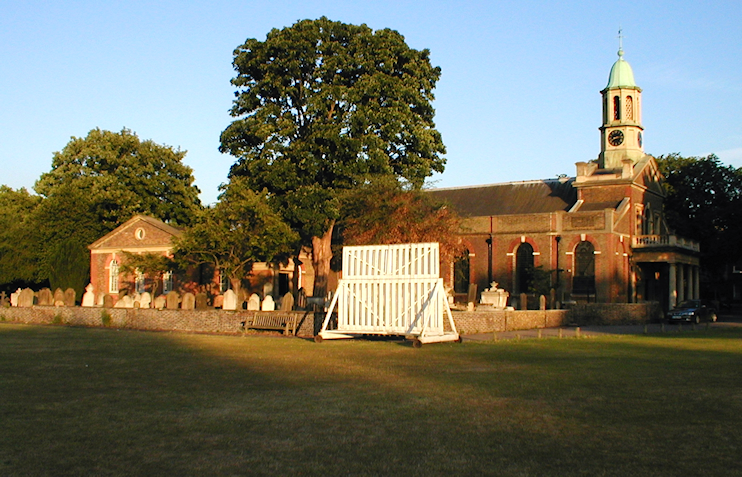Kew
Kew, Richmond upon Thames
An attractive village lying in a crook of the Thames, opposite Chiswick and Brentford

Kew’s name is probably derived from ‘key-hough’, the wood or ‘hough’ by the quay, and was first mentioned in 1327.
When the Tudors made Richmond upon Thames a regular seat of their court, Kew benefited as a home for their courtiers. The Duke of Suffolk had a mansion here that was built and pulled down in the Tudor era. The house now called Kew Palace was built in the reign of James I by a Flemish merchant and hence became known as the Dutch House.
The village had a chapel from the 16th century and St Anne’s church (shown in the photograph above) was built on Kew Green in 1714, when a public subscription raised the money and Queen Anne granted the plot of land. The village grew around the green and then southwards along the eastern edge of what is now Kew Gardens. The green used to be a regular place for fairs until these became too riotous.
Kew came to prominence as the resort of George II’s family. The Hanoverians lavished money and attention on Kew House, or the Old Palace, and its grounds. The house was taken down in 1802 and a replacement was commenced but left unfinished by George III.
To the east of Kew Bridge was the old Kew dock, which was once the centre of a thriving fishing industry until it was killed off by pollution in the Thames. The toll bridge was bought for free public use in 1873, by which time Kew Gardens station was bringing hundreds of thousands of visitors a year to the gardens and turning the village into a suburb.
The massive archive repositories of the Public Record Office were built at the end of Ruskin Avenue in the mid-1970s, when the institution moved here from Chancery Lane. Further to the south-east, St James Homes have built 500 upmarket houses and apartments at Kew Riverside, on the site of a former sewage works. To the annoyance of some residents, a neighbouring recycling centre continues to operate and was refurbished in 2006.
The residents of Kew tend to be white and well-educated. Fewer than 10 per cent of homes are rented from the council or a housing association.
The landscape and portrait painter Thomas Gainsborough was buried in St Anne’s churchyard in 1788.
